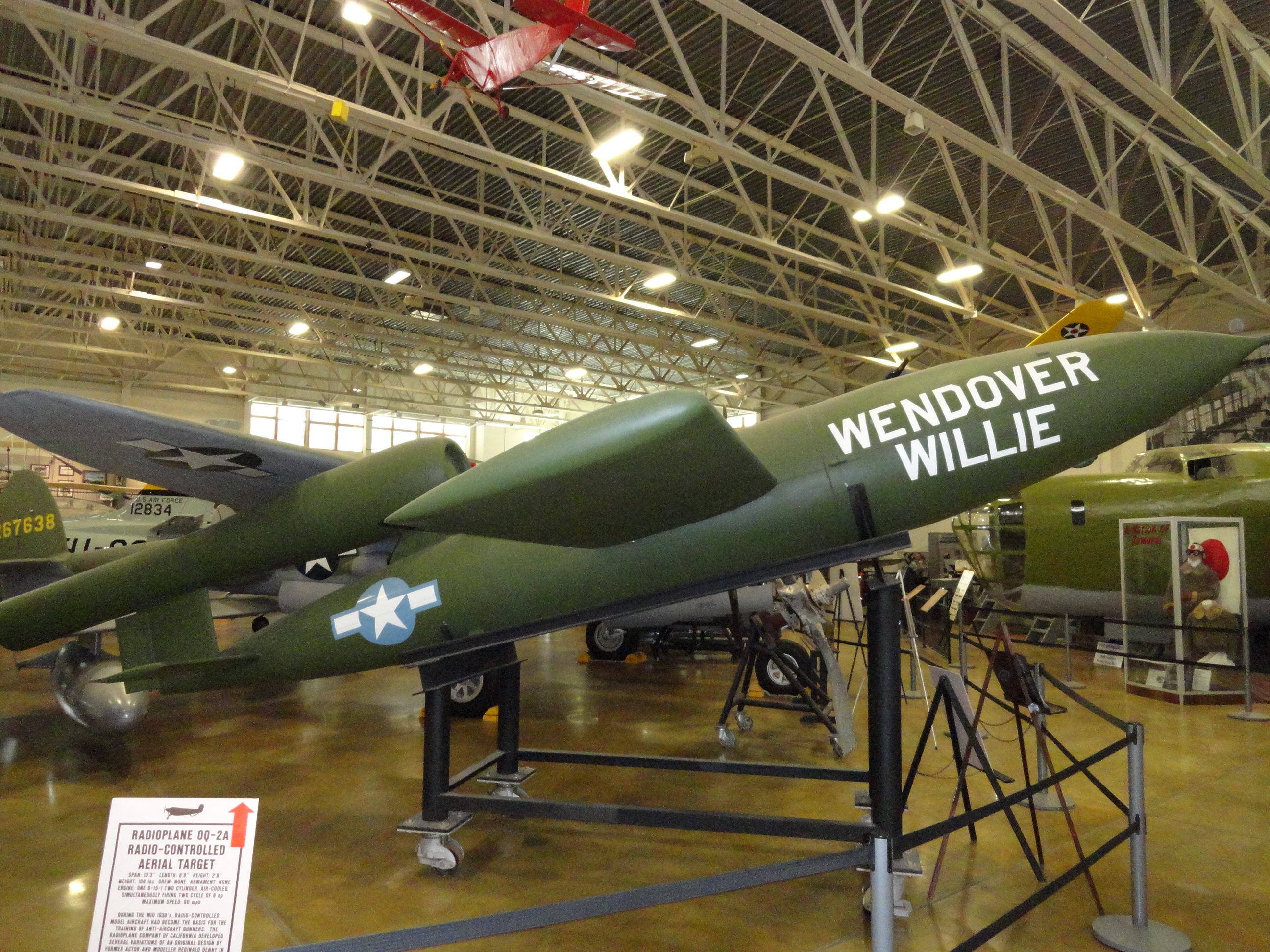
Wendover Willie Replica V1/JB2 Buzz Bomb Hill Air Force Base Museum
The only warning of an imminent V-1 strike came when a cutoff sequence killed the noisy engine of the "buzz bomb" seconds before impact. (Illustration by Jim Laurier, from V-1 Flying Bomb, 1942-52 (New Vanguard No. 106), by Steven J. Zaloga (Osprey Publishing, Bloomsbury Press Publishing)) Posted in Weapons & Gear Manual The V-1 Flying Bomb Was the First of Adolf Hitler's 'Retaliatory.

V1 FLYING BOMB (FRA 100869)
The V1 Flying Bomb, also known as a 'buzz bomb' or 'doodlebug', was one of the most fear-inducing terror weapons of the Second World War. In the face of relentless Allied bombing of German cities, Hitler created its 'revenge weapons' (Vergeltungswaffen) in an attempt to terrorise British civilians and undermine morale.
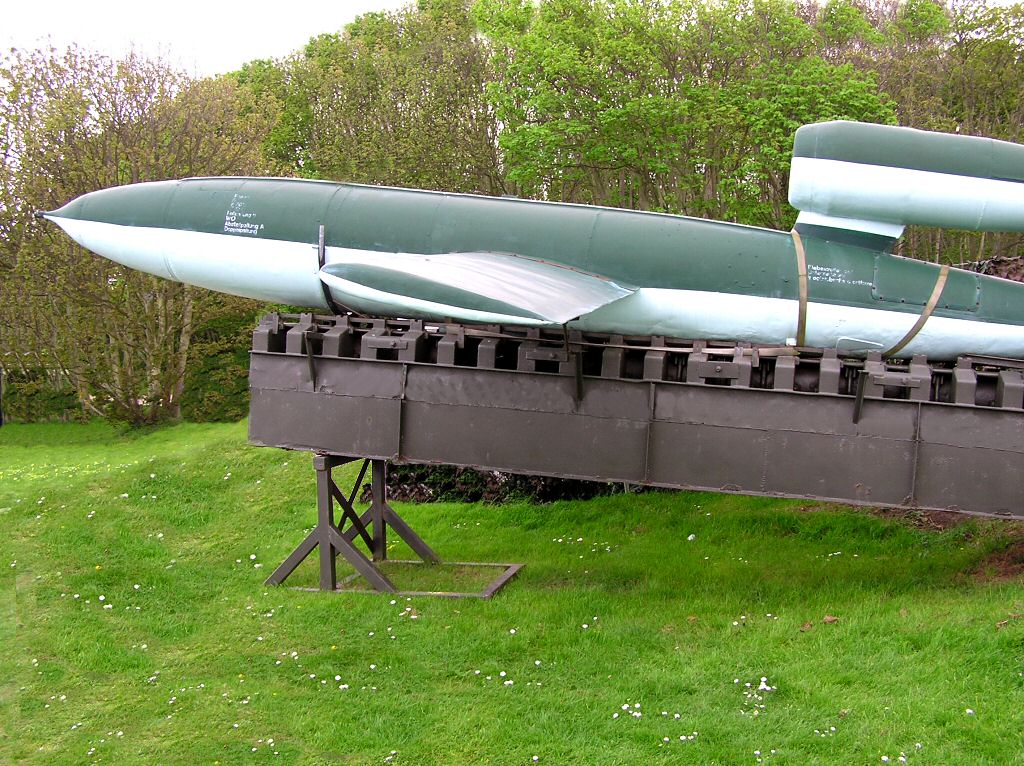
World War Two V1 Doodlebug German NAZI terror weapon unmanned flying bomb
The V-1 was constructed mainly of sheet metal, cheaply produced, and quickly assembled. It resembled a small airplane with short, stubby wings. It was propelled by a simple jet engine that ran on 80-octane gasoline. With a limited range of 148 miles, the buzz bomb had to be based forward on the French side of the English Channel.
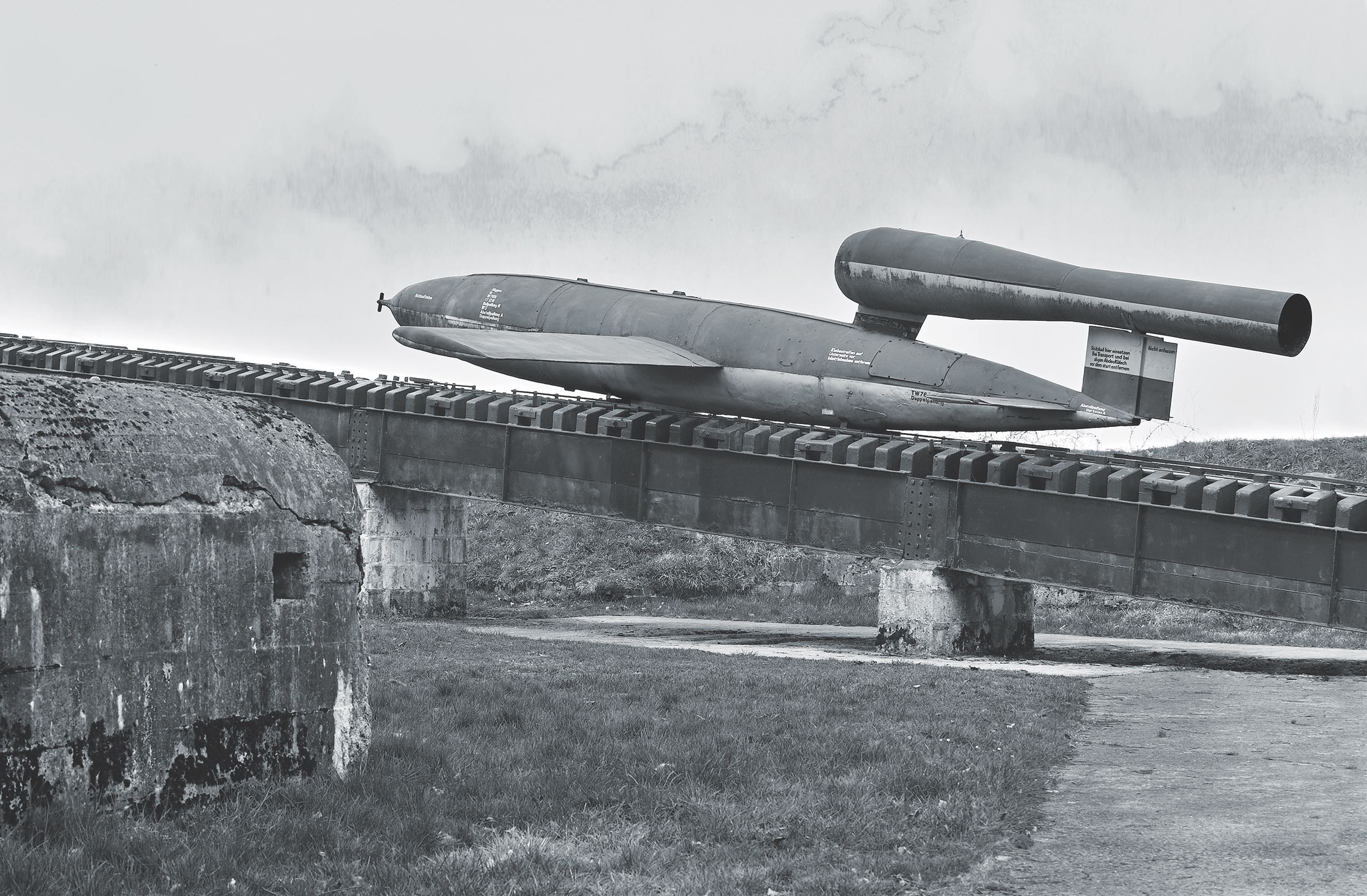
Americans Had Only Seconds To Escape A V1 Flying Bomb in London’s
Gerhard Fieseler missile V-1 missile, German jet-propelled missile of World War II, the forerunner of modern cruise missiles. More than 8,000 V-1s were launched against London from June 13, 1944, to March 29, 1945, with about 2,400 hitting the target area. A smaller number were fired against Belgium.

“Buzz Bomb” 70th Anniversary of the V1 Campaign National Air and
The V-1 Flying Bomb - 13 Facts about Germany's Infamous Cruise Missile - MilitaryHistoryNow.com 6 February, 2015 Rain of Terror — A German V-1 rocket seconds before impact. (Image source: WikiCommons) "Londoners christened them 'buzz bombs' or 'doodlebugs.'

V1 flying bomb hires stock photography and images Alamy
In Germany, restoration work was recently completed on one of World War II's most spine-chilling weapons. I n the little Bavarian town of Geisenhausen, Germany, restoration work was recently completed on one of World War II's most spine-chilling weapons: the V-1 Reichenberg, a piloted version of the guided, pulse-jet-powered flying bomb intended for precision attacks against bomber.
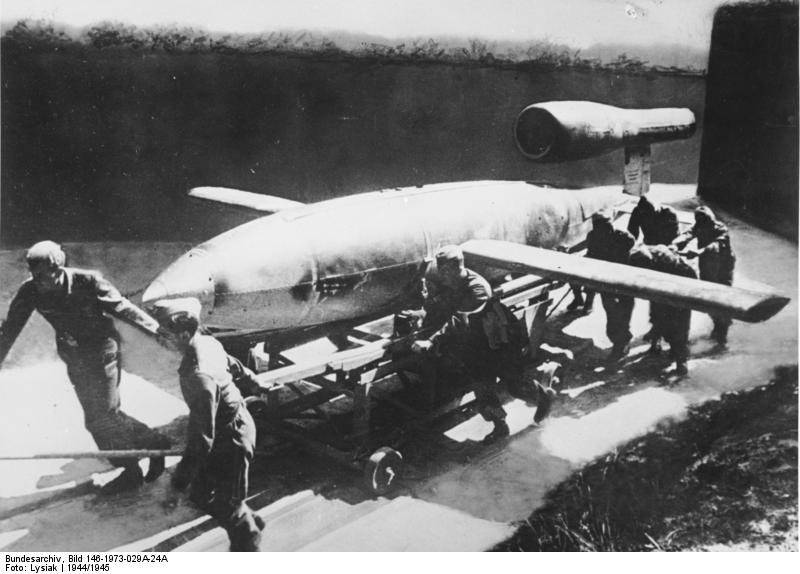
The V1 flying bomb All About History
V-1 Buzzbomb: A Technical Breakdown of the Vengeance Weapon Fundraiser Air Zoo 109K subscribers Subscribe Subscribed 194K views 2 years ago Air Zoo Docent, Kevin, takes us on a technical tour of.

Germany’s V1 Buzz Bomb Iconic Firepower Flight Journal
The V-1 flying bomb ( German: Vergeltungswaffe 1 "Vengeance Weapon 1" [a]) was an early cruise missile. Its official Reich Aviation Ministry ( RLM) designation was Fi 103 [3] and its suggestive name was Höllenhund ( hellhound ).

V1 Flying Bomb (Doodlebug) A genuine V1 flying bomb more c… Flickr
V1s were usually launched from a ramp and reached a top speed of 400 mph (640 km/h), driven by a pioneering pulse-jet engine that gave the "buzz bomb" its common English name.

V1 Flying Bomb or Doodlebug or Buzz Bomb. Fieseler Fi 103.… Flickr
The V1 flying bombs - also known as the 'doodlebugs' or 'buzz bombs' on account of the distinctive sound they made when in flight - were winged bombs powered by a jet engine. Launched from a ramp, or later from adapted bomber aircraft, the V1's straight and level flight meant that many were shot down before they reached their targets.
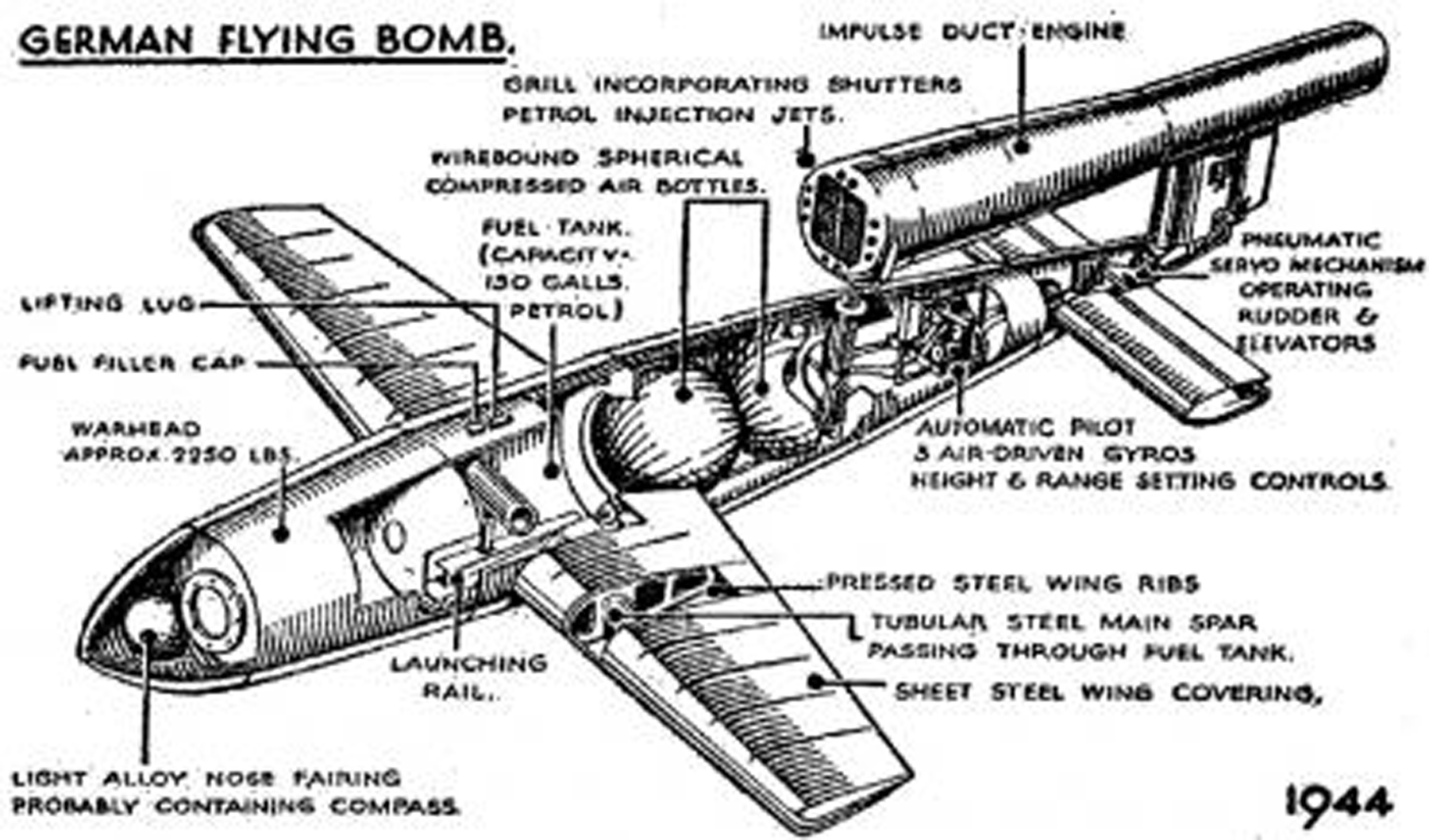
The V1 Flying Bomb Blog
Unique launch system Allied soldiers inspect a launch ramp for a V-1 "buzz bomb" near Zutphen, the Netherlands, September 1944. (Photo Credit: Unknown Author / AFP / Getty Images) Between 1944-45, over 30,000 V-1s were produced, with the Germans using forced labor.

The Fieseler Fi 103 (V1) German “Buzz Bomb” On June 13, 19… Flickr
The V-1's unique pulse-jet engine gave the Buzz Bomb its nickname: Louvers opening and shutting rapidly near the intake made a distinctive buzzing noise as the engine's "pulsating" thrust gave the V-1 a cruising speed of about 360 mph. A single Luftwaffe Flak (antiaircraft) regiment launched all Buzz Bombs in combat.

German V1 Buzz Bomb, Cutaway View, 1944 WWIIplanes
The V-1 flying bomb was developed by Germany during World War II (1939-1945) as a vengeance weapon and was an early unguided cruise missile. Tested at Peenemünde-West facility, the V-1 was the only production aircraft to utilize a pulsejet for its power plant.

V1 Buzz Bomb Colorized. by Pudgemountain on DeviantArt
The V-1 flying bomb ( German: Vergeltungswaffe 1 "Vengeance Weapon 1") was an early cruise missile. Its official Reich Aviation Ministry ( RLM) designation was Fi 103. It was also known to the Allies as the buzz bomb or doodlebug and in Germany as Kirschkern ( cherry stone) or Maikäfer ( maybug ). The V-1 was the first of the Vergeltungswaffen.
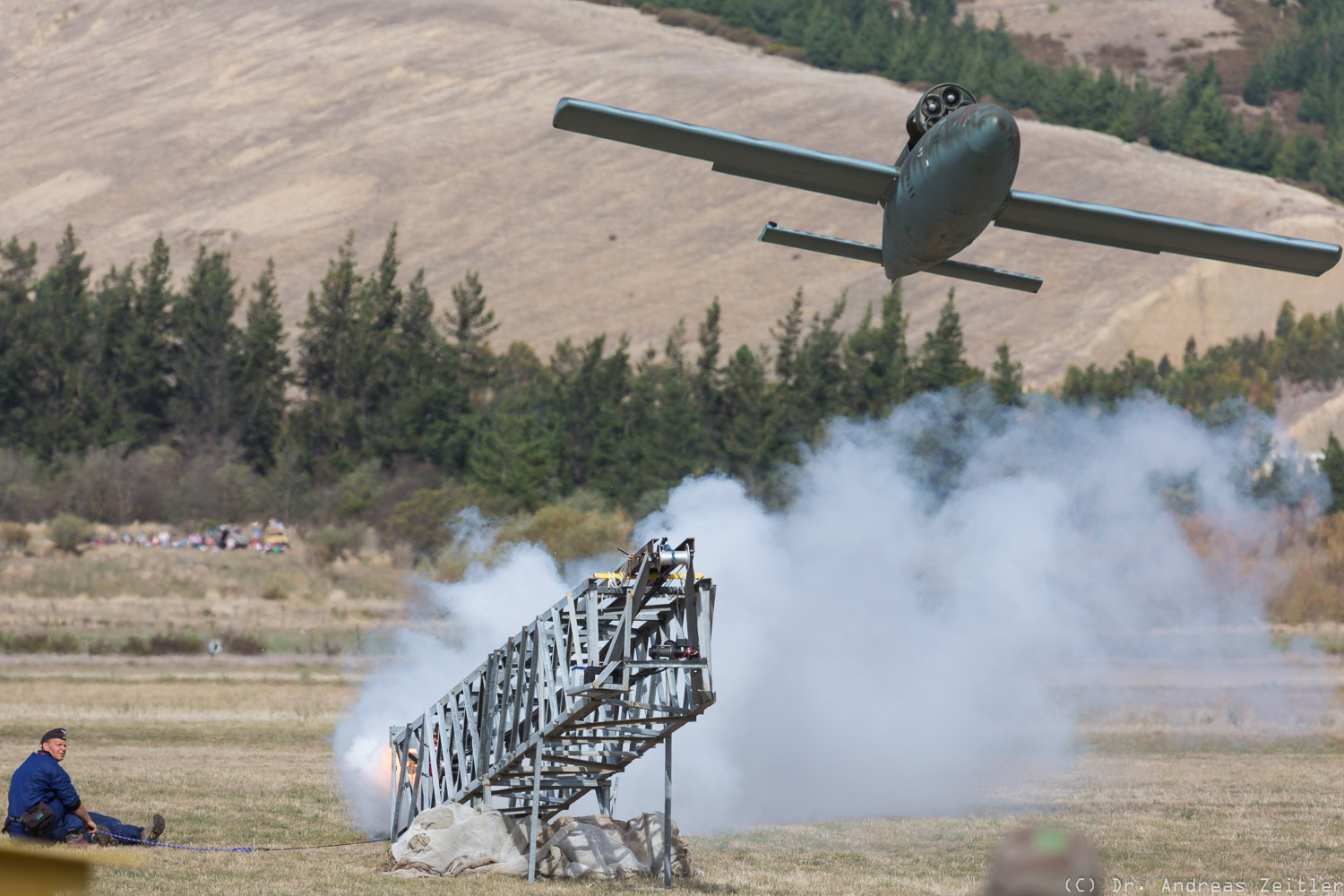
80scale V1 Buzz Bomb Model Airplane News
On June 13, 1944, exactly one week after the Allied landings in Normandy, Britain came under attack from a strange new Nazi weapon, a flying bomb. The English called it the "buzz bomb" or "doodlebug," among other nicknames, because its pulsejet engine, based on rapid, intermittent combustion, produced a very loud buzzing sound.
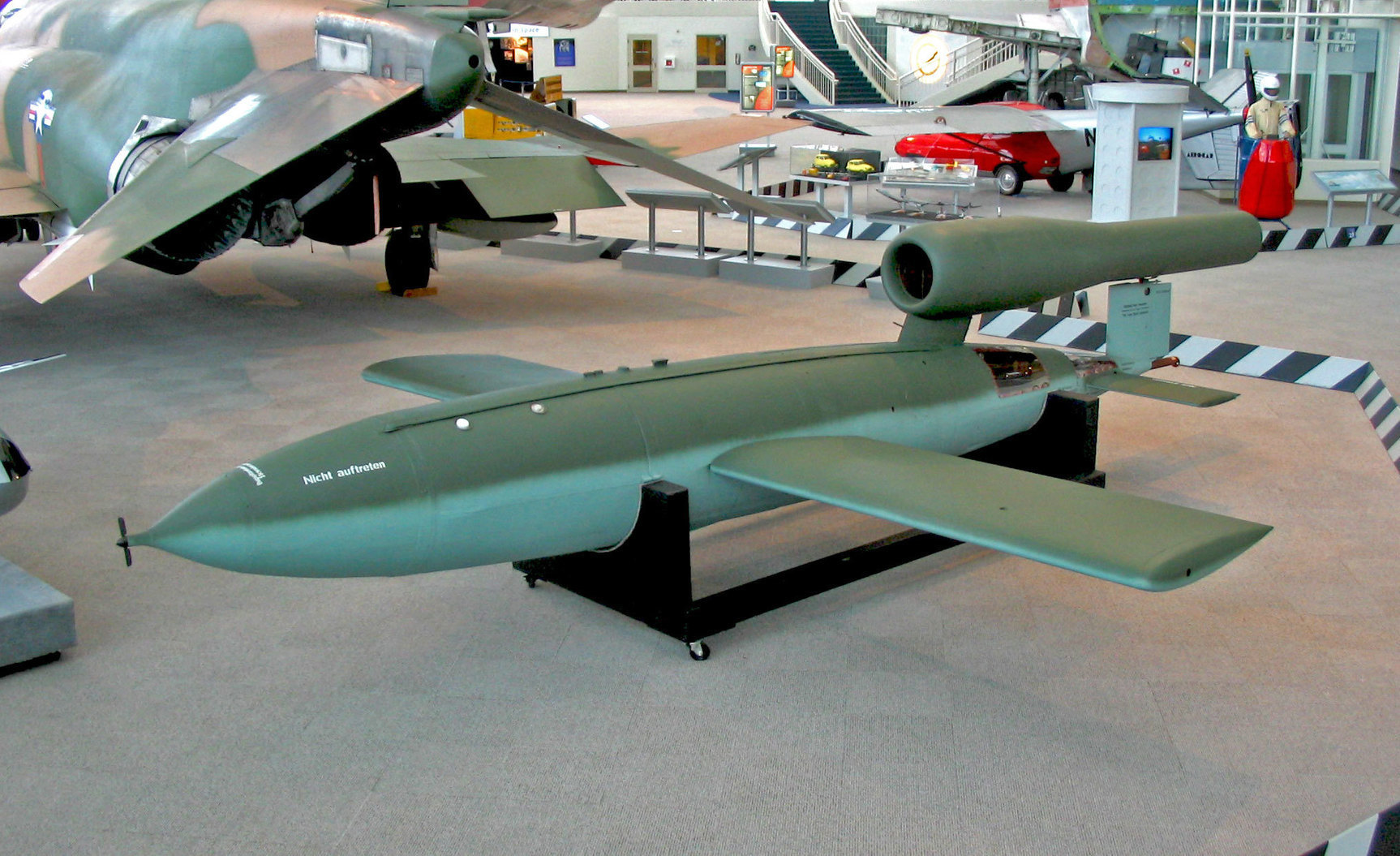
The Fieseler (V1) German “Buzz Bomb&rdquo...
This rasping sound earned the V1 the nickname "Buzz Bomb." Germany built some 30,000 V1s and launched approximately 22,400 - most from ground-based ramps, but nearly 2,000 from modified Heinkel He 111 bombers.